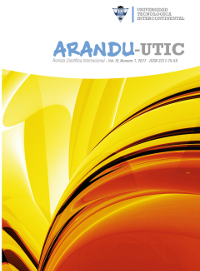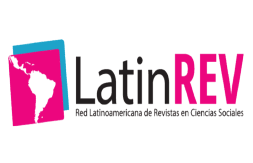En el camino de la psicología aplicada (Segunda parte)
la Frenología
Palabras clave:
Psicología Aplicada, Craneometría, Frenología, Historia de la Psicología, Historia de la CienciaResumen
El mesmerismo, la fisiognomía y la frenología constituyen tres
enfoques teóricos y aplicados fundamentados en la medicina y la
teología que durante la segunda mitad del siglo XVIII y la primera del
siglo XIX establecieron los primeros intentos por derivar
intervenciones sustentadas en los conocimientos científicos de la
época, especialmente en los campos de la física y la fisiología humana,
a algunos problemas prácticos de la salud humana. Muchos de los
asuntos a que se abocaron podrían hoy calificarse como temas de
índole psicológica. Sus principales centros geográficos de difusión
fueron Alemania, Austria y Francia, aunque posteriormente
alcanzaron importantes resonancias en otras naciones, sobre todo los
Estados Unidos. La premisa básica de este artículo, dividido en dos
partes, es que estos movimientos pueden considerare como
antecedentes de la psicología aplicada. En la primera parte se
discutieron la historia, principios y aplicaciones que se dieron al
mesmerismo y la fisiognomía. En esta segunda parte, la atención está
puesta en la craneometría o frenología, iniciada por el médico alemán
Franz Joseph Gall. Se discuten los fundamentos teóricos y filosóficos
de las ideas de Gall y su colaborador, el también médico Johann
Spurzheim, sus ámbitos de aplicación, así como sus posibles aportes y
críticas, y sus relaciones con la psicología que habría de sobrevenir
después. El artículo analiza los diferentes aspectos del problema,
considerando fuentes primarias y secundarias que puedan resultar
relevantes a una mejor comprensión del problema discutido.
Descargas
Citas
Anderson, M. L. (2014). After phrenology: Neural reuse and the interactive brain. Cambridge: The MIT Press.
Bartolucci, C. & Lombardo, G. P. (2012). Gall, F. J. En R. W. Rieber (Ed.), Encyclopedia of the History of Psychological Theories (pp. 461-462). New York: Springer.
Binet, A. & Simon, T. (1904). Méthodesnouvelles pour le diagnostic du niveauintellectuel des anormaux. L'AnnéePsychologique, 11, 191-244.
Boring, E. G. (1983). Historia de la Psicología Experimental. México DF: Trillas.
Bourdon, I. (1842).La physiognomonieet la phrénologie, ouconnaissance de l'hommed'après les traits du visage et les reliefs du crane. Examen critique des systèmesd' Aristote, de Porta, de La Chambre, de Camper, de Lavater, de Gall et de Spurzheim. París: Librairie de Charles Gosselin.
Broca, P. (1861). Sur le volumen et la forme du cerveausuivant les individus et suivant les races. París: TypographieHennuyer.
Carpintero, H. (2004). History of applied psychology, Overview. En C. Spielberg (Ed.), Encyclopedia of Applied Psychology, Volume II (pp. 179-196). Oxford: Elsevier Academic Press.
Combe, G. (1836). The constitution of man considered in relation to external objects. Boston: Marsh, Capen, & Lyon.
Condillac, E. (1922). Ensayo sobre el origen de los conocimientos humanos. Madrid: Editorial Reus.
Cooter, R. (1984).The cultural meaning of popular science: Phrenology and the organization of consent in nineteenth-century Britain. New York: Cambridge University Press.
Crabtree, A. (2008). The transition to secular psychotherapy.Hypnosis and the alternate-consciousness paradigm. En E. R. Wallace & J. Gach (Eds.), History of Psychiatry and Medical Psychology (pp. 555-586). New York: Springer.
Darnton, R. (1968). Mesmerism and the end of the Enlightenment in France. Cambridge: Harvard University Press.
Dumont, F. (2010). A history of Personality Psychology.Theory, science and research from Hellenism to the twenty-first century. New York: Cambridge University Press.
Ekman, P. (2003). Emotions revealed: Recognizing faces and feeling to improve communication and emotional life. New York: Times Books.
Eling, P. (1994). Introduction. En P. Eling (Ed.), Reader in the history of aphasia. From [Franz] Gall to [Norman] Geschwind (pp. xi-xvi). Amsterdam: John Benjamins Publishing Company.
Eling, P., Draaisma, D. &Conradi, M. (2011). Gall’s visit to The Netherlands.Journal of the History of the Neurosciences, 20 (2), 135- 150.
Flourens, P. (1842). Examen de la phrénologie.París: Paulin.
Fridlund, A. J. (1994). Human facial expression: An evolutionary view. San Diego: Academic Press.
Gall, F. J. (1835).On the origin of the moral qualities and intellectual faculties of man, and the conditions of their manifestation. Boston: Marsh, Capen & Lyon, 6 volúmenes.
García, J. E. (2014). La relación entre investigación básica y profesión aplicada en la psicología latinoamericana. Revista Peruana de Psicología y Trabajo Social, 3(2), 109-124.
García, J. E. (2015a). Fundamentos históricos de la Psicología Educacional. En D. Jáuregui Camasca, R. León Donayre & M. A. Rodríguez Rea (Eds.), Homenaje a Reynaldo Alarcón (pp. 393-426). Lima: Universidad Ricardo Palma, Editorial Universitaria.
García, J. E. (2015b). El pensamiento precientífico sobre la salud y la enfermedad. Ciencias Psicológicas, 9 (2), 337-349.
García, J. E. (2016a). En el camino de la psicología aplicada (Primera parte): Mesmerismo y fisiognomía. Arandu-UTIC, Revista Científica Internacional, 3 (1), 36-84.
García, J. E. (2016b). Alternative Medicine and Therapies. En N. A. Naples, R. C. Hoogland, M. Wickramasing & W. C. A. Wong (Eds.), The Wiley-Blackwell Encyclopedia of Gender and Sexuality Studies (pp. 1-6). Chichester: Wiley.
Greenwood, J. D. (2009). A conceptual history of psychology. New York: McGraw-Hill.
Guthrie, D. (1945). A history of Medicine. London: Thomas Nelson & Sons.
Haskins, R. W. (1839). History and progress of phrenology. Buffalo: Steele & Peck.
Hecht, J. M. (2003). The end of the soul: Scientific modernity, Atheism, and Anthropology in France. New York: Columbia University Press.
Hershenson, D. B. (2008). A head of its time: Career counseling's roots in phrenology. The career development quarterly, 57 (2), 98-192.
Hothersall, D. (1997). Historia de la Psicología. México DF: McGraw-Hill.
Hume, D. (1739/1984). Tratado de la naturaleza humana, 3 vols. Buenos Aires: Orbis.
Jones, D. & Elcock, J. (2001). History and theories of psychology: A critical perspective. London: Arnold.
Kandel, E. R. (2007). En busca de la memoria: El nacimiento de una nueva ciencia de la mente. Buenos Aires: Katz.
Lavater, J. C. (1853). Essays on Physiognomy: Designed to promote the knowledge and the love of mankind. London: William Tegg and Co, Octava Edición.
Lawson, R. B., Graham, J. E. & Baker, K. M. (2016). A history of psychology: Globalization, ideas, and applications. New York: Routledge.
Leahey, T. H. (1998). Historia de la Psicología. Principales corrientes en el pensamiento psicológico. Madrid: Prentice Hall, Cuarta Edición.
Leahey, T. H. & Leahey, G. E. (1984). Psychology's occult doubles: Psychology and the problem of pseudoscience. Chicago: Nelson-Hall.
Leonard, D. C. (2002). Learning theories A to Z. Westport: Greenwood Press.
Lilienfeld, S. O., Lynn, S. J. & Lohr, J. M. (Eds.) (2003). Science and pseudoscience in clinical psychology. New York: Guilford.
Lilienfeld, S. O., Ruscio, J. & Lynn, S. J. (Eds.) (2008). Navigating the mindfield. A guide to separating science from pseudoscience in mental health. New York: Prometheus Books.
Lombroso, C. (1876). L´uomo delinquent studiato in rapporto alla antropologia, alla medicina legale e dalle discipline carcerarie. Milano: Ulrico Hoepli Libraio-Editore.
Lyons, S. L. (2009). Species, serpents, spirits, and skulls: Science at the margins in the Victorian age. Albany: State University of New York Press.
Malone, J. C. (2009). Psychology: Pythagoras to present. Cambridge, Massachusetts: Bradford Books/The MIT Press.
Marx, O. M. (2008). German romantic psychiatry. Part I. Earlier, including more-psychological orientations. En E. R. Wallace & J. Gach (Eds.), History of Psychiatry and Medical Psychology (pp. 313-333). New York: Springer.
McDougall, W. (1912). An introduction to Social Psychology. London: Methuen & Co, Sexta Edición.
Mesmer, F. A. (1779). Mémoire sur la découverte du magnétisme animal. París: Chez P. Fr. Didot le jeune, Libraire Imprimeur de Monsieur, quai des Aueuftins.
Millon, T. (2004). Masters of the mind: Exploring the story of mental illness from ancient times to the new millennium. Hoboken: Wiley.
Modern, J. L. (2011). Secularism in Antebellum America. Chicago: The University of Chicago Press.
Moulin, M. (1868). Phrényogénie ou données scientifiques modernes pour doter ab initio ses enfants de l'organization prhrénologique du génie et du talent supérieur (Bosses intellectogènes de Gall, signes heureux de Lavater). París: E. Dentu.
Nichols, R. (2007). Thomas Reid’s theory of perception. New York: Oxford University Press.
Pearce, J. M. S. (2009). Marie-Jean-Pierre Flourens (1794–1867) and cortical localization.European Neurology, 61 (5), 311-314.
Pickren, W. E. & Rutherford, A. (2010). A history of modern psychology in context. Hoboken: Wiley.
Porterfield, A. (2005). Healing in the history of Christianity. New York: Oxford University Press.
Quick, T. (2014). From phrenology to the laboratory: Physiological psychology and the institution of science in Britain (c.1830-80).History of the Human Sciences, 27 (5), 54-73.
Reid, T. (1765). An inquiry into the human mind, on the principles of common sense. Edinburgh: A. Kincaid and J. Bell.
Reid, T. (1786). Essays on the intellectual powers of man. Dublin: L. White, 2 volúmenes.
Reid, T. (1843). Essays on the active powers of the human mind; An inquiry into the human mind on the principles of common sense; and an Essay on quantity. London: Thomas Tegg.
Renneville, M. (2000). Le langage des crânes. Une histoire de la phrénologie. París: Institut d'édition Sanofi-Synthélabo.
Richards, G. (2002). Putting Psychology in its place. A critical historical overview. London: Routledge, SegundaEdición.
Rosenzweig, M. R. (1996). Aspects of the search for neural mechanism of memory. Annual Review of Psychology, 47, 1-32.
Sala Rose, R. (2003). De la materialización del yo a la materialización del ideal humano: La fisiognómica, la frenología y el arte. Humanitas, Humanidades Médicas, 1 (4), 77-84.
Schultz, D. P. & Schultz, S. E. (2011). A history of modern psychology. Belmont: Wadsworth, Cengage Learning, Décima Edición.
Schönpflug, W. (1992). Applied Psychology: Newcomer with a long tradition. Applied Psychology: An international review, 42 (1), 5-30.
Simpson, D. (2005). Phrenology and the neurosciences: Contributions of F. J. Gall and J. G. Spurzheim. ANZ Journal of Surgery, 75, 475-482.
Sizer, N. (1882). Forty years in phrenology; embracing recollections of history, anecdote, and experience. New York: Fowler & Wells, Publishers.
Smith, L. (2013). Sex on the brain. Journal of Family Planning and Reproductive Health Care, 39, 142-143.
Smith, R. (2013). Between mind and nature: A history of psychology. London: Reaktion Books.
Sokal, M. M. (2001). Practical phrenology as psychological counseling in the 19th-century United States. En C. D. Green, M. Shore & T. Teo (Eds.), The transformation of psychology: Influences of 19th-century philosophy, technology, and natural science (pp. 21-44). Washington, DC: American Psychological Association.
Spoerl, H. D. (1936). Faculties versus traits: Gall|'s solution. Character & Personality, 4 (3), 216-231.
Spurzheim, J. G. (1815). Outlines of the physiognomical system of Drs. Gall and Spurzheim: Indicating the dispositions and manifestations of the mind. London: Baldwin, Cradock, and Joy.
Spurzheim, J. G. (1833). Examination of the objections made in Britain against the doctrines of Gall and Spurzheim. Boston: Marsh, Capen& Lyon.
Spurzheim, J. G. (1834). Phrenology or the doctrine of the mental phenomena. Boston: Marsh, Capen and Lyon, 2 volumenes, TerceraEdición.
Stewart, D. (1818). Elements of the philosophy of the human mind. Boston: Wells and Lilly.
Thompson, R. F. & Zola, S. M. (2003).Biological Psychology. En D. K. Freedheim & I. B. Weiner (Eds.), Handbook of Psychology, Volume 1: History of Psychology (pp. 47-66). Hoboken: Wiley.
Tomlinson, S. (2005).Head masters: Phrenology, secular education, and nineteenth-century social thought. Tuscaloosa: The University of Alabama Press.
Uttal, W. R. (2001). The new phrenology: The limits of localizing cognitive processes in the brain. Cambridge: The MIT Press.
VanWyhe, J. (2002). Phrenology. En M. Shermer (Ed.), The Skeptic: Encyclopedia of Pseudoscience (pp. 170-172). Santa Barbara: ABC-CLIO.
VanWyhe, J. (2004). Was phrenology a reform science? Towards a new generalization for phrenology. History of Science, 42, 313-331.
Vargas Llosa, M. (1985). La guerra del fin del mundo. Buenos Aires: Seix Barral.
Vyleta, D. M. (2006). The cultural history of crime. En S. Berger (Ed.), A companion to nineteenth century Europe 1789–1914 (pp. 355-368). Malden: Blackwell.
Wertheimer, M. (2012). A brief History of Psychology. New York: Psychology Press, Quinta Edición.
Wickens, A. P. (2015). A history of the brain: From Stone Age surgery to modern neuroscience. New York: Psychology Press.
Wilkinson, J. J. G. (1851). The human body and its connexion with man, illustrated by the principal organs. London: Chapman and Hall.
Witmer, L. (1907). Clinical Psychology. Psychological Clinic, 1, 1-9.
Wrobel, A. (Ed.) (1987). Pseudo-science and society in nineteenth century America. Lexington: The University Press of Kentucky.
Yildirim, F. B. & Sarikcioglu, L. (2007). Marie Jean Pierre Flourens (1794–1867): an extraordinary scientist of his time. Journal of Neurology, Neurosurgery, and Psychiatry, 78 (8), 852.doi: 10.1136/jnnp.2007.118380.
Publicado
Cómo citar
Número
Sección
Licencia
Derechos de autor 2021 Arandu UTIC

Esta obra está bajo una licencia internacional Creative Commons Atribución 4.0.





















